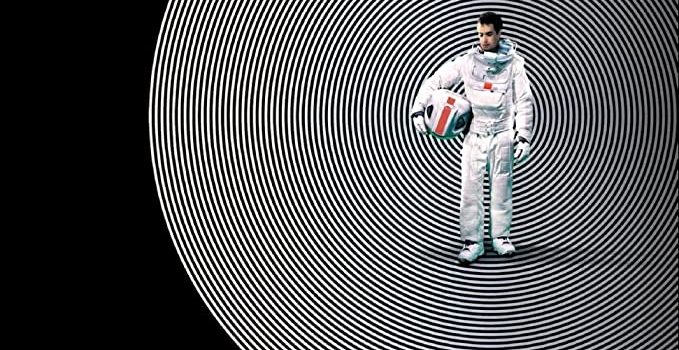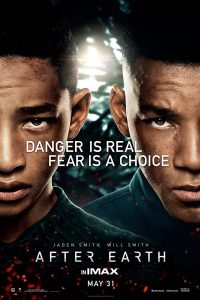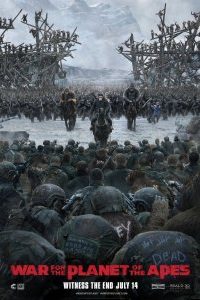A Moon for the (Technologically) Misbegotten: A Review of Moon
First, it must be said, there are definite reasons to celebrate the film Moon. At a time when the surest path to profits in making a film about space travel is to utterly ignore its realities, it is remarkable and heartening that a few filmmakers like writer-director Duncan Jones and writer Nathan Parker are still choosing to make films that actually depict humanity’s more probable futures in outer space — such as an outpost on the far side of the Moon manned by a single astronaut who must periodically don his spacesuit and venture outside his base to lumber clumsily across the lethal lunar surface. Their film also is admirably performing one of the traditional functions of science fiction by explaining and promoting an innovative scientific idea: the suggestion, much discussed by space enthusiasts but currently unknown to the general public, that we might someday solve all of our energy problems by mining the helium 3 that is abundant on the Moon and shipping it to Earth to be used in controlled nuclear fusion. To be sure, we currently lack the technology to put this plan into effect, but it remains a legitimate aspiration, and this film like this just might inspire the research which would someday make it all possible, in the manner of Hugo Gernsback’s original vision of science fiction as a force that could make the world a better place to live in. Finally, as will be discussed later, Moon has some intriguing points to make about the genuine difficulties astronauts will face when they become true inhabitants of outer space, and not just visitors.
Having said these things, I wish I could proceed to offer a more enthusiastic assessment of Jones’s film as a whole; however, while the presumed purpose of the spacesuit film is to startle viewers with the unfamiliar, Moon is, to a large extent, a film that rather quickly moves into quite familiar, even derivative, territory, at least to anyone familiar with science fiction films. That is, it is a film which surprises mostly because of what it contrives to borrow from. (At this time, anyone who has not seen the film, and wishes to remain unaware of precisely how the film develops its premise of a solitary lunar astronaut awaiting the end of his three-year mission, should stop reading this review, because it is impossible to meaningfully discuss the film without revealing its major “spoiler.”)
Since writer-director Duncan Jones, as the son of singer-songwriter David Bowie, is presumably not in desperate need of money, one might like to assume that he approached the challenge of writing and directing a science fiction film with only the purest of motives; yet it is possible to characterize Moon as the ultimate exercise in cynical self-aggrandizement. That is, if one seeks to identify the greatest science fiction film ever made, there are only two credible candidates: 2001: A Space Odyssey (1968), the only science fiction film voted by critics as one of the ten greatest films ever made, and Blade Runner (1982), named by a recent poll as the best science fiction film of all time. So, if you want your science fiction film to be a sure-fire success, why not combine those two films? Jones might have pitched Moon to skeptical financiers in precisely those terms: “It’s 2001 meets Blade Runner!” Or, “Dave Bowman, instead of being taken away by aliens, discovers he’s a replicant!” All right, that isn’t exactly what is going on in Jones’s film, but it’s definitely too close for comfort.
To be more precise: Sam Bell (Sam Rockwell), believing himself to be an astronaut almost at the end of his lonely three-year mission to oversee the mining and transportation of helium 3 on the far side of the Moon, with a wife and baby daughter eagerly awaiting his return, discovers that he is actually only one in a series of clones of the original Sam Bell — each awakened, implanted with Bell’s memories, and put to work for three years before being disposed of and replaced by the next clone. (His employer Lunar Industries, we are rather implausibly told, finds this system more economical than actually sending in human replacements.) I will grant that the way Jones brings him to this revelation is ingenious: after he is injured in an accident outside his compound, his replacement is prematurely awakened, illegally ventures outside to discover his injured predecessor, and brings him back to be healed, thus temporarily providing the station with two Sam Bells to interact and figure out the situation. But the various feelings of shock, rage, and sadness that this revelation brings to both Sam Bells will be evocative only to those who have not watched the replicant Rachael (Sean Young) go through all the same changes in Blade Runner. You mean, all my memories of my past were only transplanted into my brain from the person who actually experienced them? You mean, all my photographs of loved ones are only props provided to sustain the illusion that I am a real human being instead of a persuasive copy? Furthermore, as we observe the first Sam Bell grow weaker and weaker, spit up blood, and literally start falling apart (he spits out a tooth, and we learn from a taped report that an earlier Sam Bell’s hair was falling out), it seems obvious that these clones, in the manner of Blade Runner‘s replicants, are programmed to die in a few years, around the time of their replacement, probably to prevent them from having the wherewithal to raise awkward questions around the time they are purportedly being returned to Earth; yet the film does not make this point explicitly, perhaps fearful of appearing to imitate Ridley Scott’s masterpiece too exactly. (It may mean nothing, but it did seem to me that the end credits of Moon included more lawyers than is normally the case, possibly to forestall lawsuits.)
Still, despite these obvious thematic resonances with Blade Runner, Jones’s film is primarily haunted by inescapable references to 2001: A Space Odyssey, the definitive spacesuit film which all successors are required to either emulate or contradict. The most visible similarity is Sam Bell’s ubiquitous computer companion whose name, recalling HAL 9000, is GERTY 3000 (voiced by Kevin Spacey), although GERTY does move around more in the manner of the autopilot in WallE (2008). Since “Gerty” (short for Gertrude) is a female name, the original intent undoubtedly was to give this computer a female voice, to contrast with 2001‘s Douglas Rain, but I suspect that early rushes convinced filmmakers that a male voice was needed to match the moonbase’s realistic aura. (Despite forty years of vigorous challenges from feminists, it seems there is a lingering attitude that harsh, forbidding environments, like outer space honestly considered, are most appropriately handled by all-male or mostly-male crews, which remain the norm in spacesuit films, unlike more fanciful adventures which pretend that outer space isn’t all that threatening, like Star Trek, where female computer voices fit in just fine.) Like HAL, GERTY initially appears competent and friendly, if at times overly solicitous; in one eerie parallel, while HAL at one point inimically refuses to let Dave Bowman enter his spacecraft, GERTY at one point inimically refuses to let Sam Bell leave his protective compound. And it was absolutely brilliant to replace the red eye of HAL with a yellow smiley face, sometimes altered to express puzzlement, indecisiveness, or sadness. But to be definitively different from its predecessor, Moon has its computer remain a stalwart, devoted servant of Sam Bell to the very end: unlike HAL, who starts murdering his own crew in order to prevent them from shutting him off, GERTY cheerfully volunteers to be turned off and have his memories erased before rebooting in order to benefit his human colleagues. Among other references to Stanley Kubrick’s film, there are astronomical scenes of the Earth and the Moon in conjunction (but not the Sun); David Poole jogs around the Discovery and shadowboxes, while Sam Bell runs on a treadmill and hits a punching bag; a fleeting, multi-colored image of the second Sam Bell returning to Earth recalls Dave Bowman’s “trip” through the Star Gate; and Sam’s picturephone conversation with his “daughter” on Earth, though quite different from Heywood R. Floyd’s picturephone conversation with his daughter in 2001, cannot be overlooked.
All this is not to say that Blade Runner and 2001 were the only science fiction films on Duncan Jones’s mind; for when the first Sam Bell imagines that a beautiful woman is sitting in his chair, or that a mysterious humanoid figure is standing on the surface of the Moon, one cannot help recalling both adaptations of Stanislaw Lem’s Solaris (1972, 2002) and incorrectly suspecting that the astronaut may be being influenced by some enigmatic alien presence. And the film’s characterization of Lunar Industries as an evil corporation, all too willing to sacrifice the well-being of its employees in search of enhanced profits, is right out of the Alien films; and like those films, Moon concludes with conflicting signals regarding whether the company will be forced to change its ways or allowed to continue with its cruel, exploitative practices.
However, despite all of these conspicuous debts to its distinguished predecessors, one must concede that there is something original, and perhaps prophetic, about this film. We all realize that ongoing improvements in systems of communication are making face-to-face contact less and less necessary, and that in Faith Popcorn’s terminology, increasing numbers of people are opting for a lifestyle of “cocooning,” spending most of their time isolated in their homes, a trend that might someday lead to the world of C. M. Forster’s “The Machine Stops” (1909), where individuals spend their entire lives alone in enclosed chambers, connecting with other people only by means of long-distance communication. In particular, since outer space will likely remain for some time the home of only a few scattered inhabitants, this will necessarily become their characteristic lifestyle. What would it be like for one or two people to live for years all by themselves, with other people impacting their consciousness only as voices or televised images? One can argue that Moon is providing both a literal and metaphorical answer to that question. Literally, if there is only one person, that person is likely to go insane (which appears to be occurring to the first Sam Bell in early scenes, and also happens with countless isolated individuals living in space in science fiction stories); if it is two or more people, they are likely to end up engaging in verbal or even physical conflict (as the two Sam Bells at one point struggle over possession of a knife), although a common threat to their existence might lead them to reconcile (which is how the film concludes). Metaphorically, the two Sam Bells can be said to represent the process of adjusting to the experience of “living with yourself”: first, there is a “honeymoon” period when everything seems fine (the early scenes in the film); then, as symbolized by the appearance of the second Sam Bell, inner conflicts arise which may induce a sort of paralysis (the second Sam at first seems pointlessly angry and argumentative, while the first Sam seems laid back and resigned to his fate, two natural and contrary ways to respond to an overwhelming dilemma); and you finally resolve your inner conflicts and again become a functional individual (the two Sams finally learn to work as a team to investigate their situation and devise a solution). The film’s ultimate answer to the key question that continues to bedevil proponents of space travel — can humans really endure the long years of isolated living that the conquest of space will require? — is very much a mixed message: the first Sam Bell, who disturbingly deteriorates both physically and mentally, epitomizes the grim conclusion of James Gunn’s Station in Space (1958) — that living in space will inexorably destroy the human heart and soul; yet the survival of the second Sam Bell, with his physique and wits intact, suggests that humans can rise to the challenge of space. What perhaps tips its scale in favor of pessimism is the fact that Moon, like WallE, is a film that shows people returning to Earth, not venturing further into the cosmos, as its happy ending.
Further, as this discussion should be conveying, Moon represented an enormous challenge for its lead actor, Sam Rockwell, for despite Spacey’s voice and brief glimpses of other actors on television screens and in flashbacks, this is effectively a one-man film; a further problem is that most science fiction filmgoers, recalling Rockwell only as the addled Zaphod Beeblebrox in The Hitchhiker’s Guide to the Galaxy (2005), may initially struggle to take him seriously, which is probably why he quickly shaves off his beard so as to bear less resemblance to Douglas Adams’s intergalactic clown. But Rockwell proves his worth in effecting an unusual but necessary shift in perspective during the course of the film. At first, since we have gotten to know the first Sam Bell, he is our viewpoint character, and the second Sam Bell seems a cold, unwelcome intruder. But the first Sam Bell is doomed to die soon, and a continuing focus on him would thus make the film an unpalatable tragedy. Thus, the film must make the first Sam Bell seem less and less appealing and instead establish the second Sam Bell as the new viewpoint character, since he will survive to provide the film with a moderately uplifting conclusion. With an assist from the makeup department, which makes the first Sam look more and more grotesque, Rockwell’s acting skills manage to alter audience sympathies in precisely the desired manner.
The film’s other message about life in space is that, in contrast to the stark interiors of 2001: A Space Odyssey, humans will always feel a need to familiarize and personalize their surroundings, to make them as Earthlike as possible. Photographs, a kid’s drawing, and a Tennessee Titans poster are stuck on the walls, and Sam Bell uses a marker to draw happy faces on the wall to count the days; he is awakened each morning by an incongruous, old-fashioned alarm clock, and a pair of dice dangle in front of the windshield of his lunar rover; replicating the old childhood prank, Sam has placed a note reading “KICK ME” on GERTY’s back; Sam builds a model city and talks to and names the plants he is growing; and as a man starved for female company, he naturally seeks entertainment featuring female characters — ancient reruns of Bewitched (1964-1972) and The Mary Tyler Moore Show (1970-1977). There is grim irony in the corny t-shirt he wears in the opening scene — which reads “Wake Me When It’s Quitting Time” — since GERTY will literally wake up a new clone when it is time for the old one to quit (and the same t-shirt is observed on one of the old, dead clones) — and in the song that greets him every morning — Chesney Hawkes’s “The One and Only” — since he is definitely not the “one and only” Sam Bell. (And might his other favorite song — Katrina and the Waves’s “Walking on Sunshine” — represent a subtle dig at another recent spacesuit film, Danny Boyle’s Sunshine [2007], which depicted life in space with far less success?)
Whether all of these homey touches would really help an astronaut cope with three years of living alone on the far side of the Moon, of course, remains very much an open question; indeed, many filmgoers may react negatively to this film because it too perfectly replicates the experience of living on the Moon for two hours, oppressively limited to the confines of a single set and the company of a single individual. One eventual value of Moon, then, might be as a test for aspiring astronauts when we are actively recruiting people to stay on the Moon for an extended period of time. If you can watch and enjoy this film without qualifications, that is, you might be an ideal candidate for the job; but if you keep shifting in your seat and checking your watch, you should probably remain on Earth. For Moon might qualify as the most realistic film about the probable experience of living on the Moon ever made — which ironically represents both its greatest artistic virtue, and its greatest artistic flaw.
Directed by Duncan Jones
Written by Duncan Jones (story), Nathan Parker (screenplay)
Starring Sam Rockwell, Dominique McEligott, Kaya Scodelario, Matt Berry, Benedict Wong, Malcolm Stewart, and the voice of Kevin Spacey
Official Website: MOON // A file by Duncan Jones






